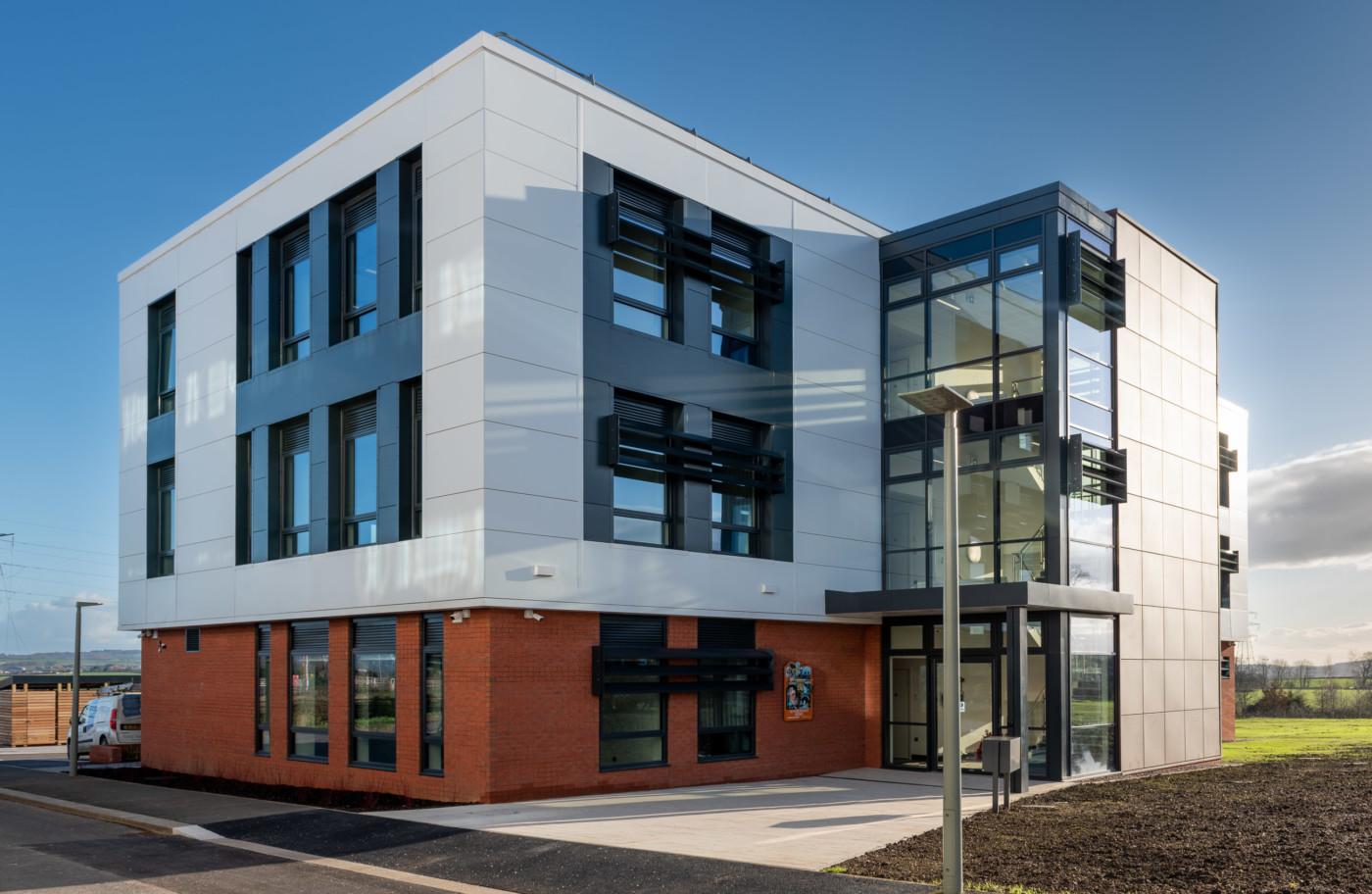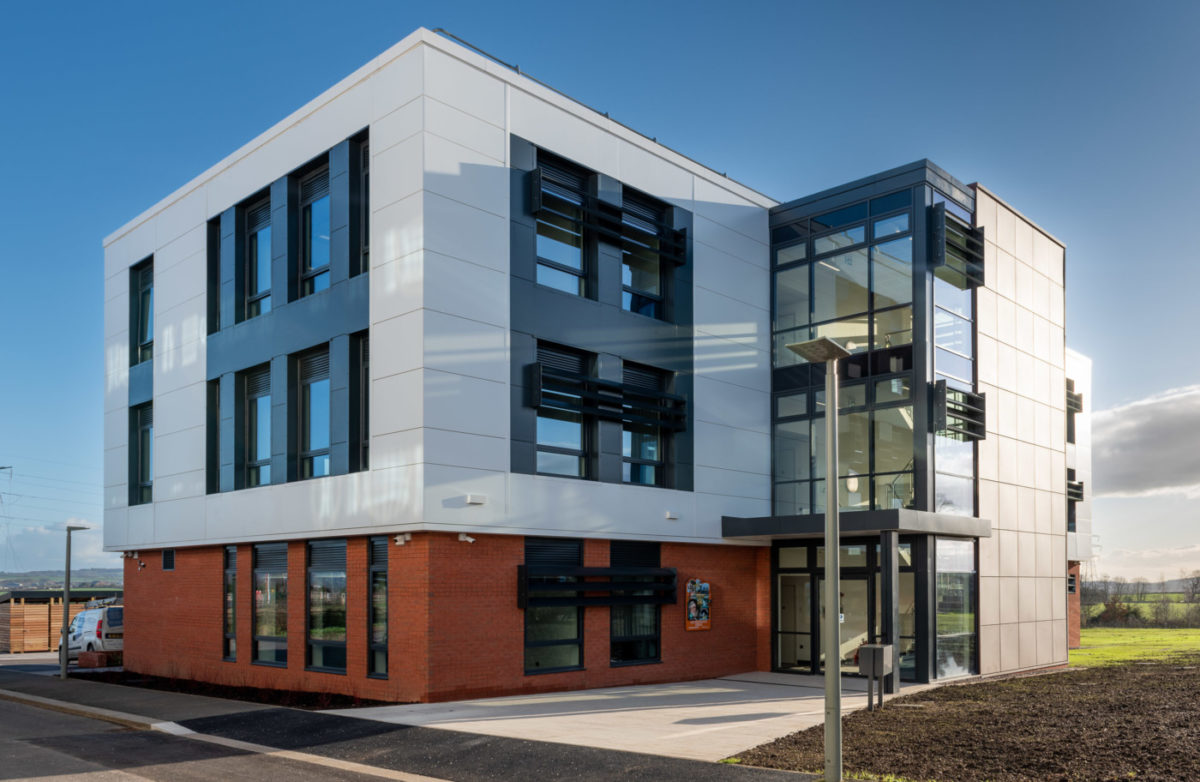The project
The Exeter Science Park (ESP) Grow Out Building 3 is the latest in a rolling series of developments in which they have demonstrated an approach of Continuous Improvement in their built estate, particularly relating to the environmental performance of buildings
It fulfils a need to provide larger spaces for ESP’s existing tenants to “grow out” into, thus freeing the existing incubator spaces for new incoming tenants.
The Constraints
Funding
The project was externally funded However, the funding cost and time envelopes were extremely challenging, necessitating a completion within 18 months of funding award.
Programme
Morgan Sindall was formally appointed as Design and Build contractor in November 2021, leaving less than 14 months to take develop the RIBA 2 design price the project, agree the price and contract, and deliver the scheme.
Environment
This project’s Net Zero Carbon in Use is a steppingstone to the client’s ultimate aim of developing carbon negative buildings that generate more power than they use, creating a carbon “payback” within the lifetime of the building.
Furthermore, BREEAM Excellent was a key project goal.
Procurement
Client Exeter Science Park (ESP) chose a collaborative framework – the Southern Construction Framework (SCF) – to select and engage with contractors.
Stakeholder Engagement
Harvey Gardner, ESP’s Head of Property, set the tone of collaborative working from the very beginning with formal contractor engagement meetings through the competitive tender process. This continued throughout the 2nd stage tender negotiation period and into the construction period with a process of formal and informal engagement including:
- Formal gateway meetings;
- Value engineering meetings;
- Specific cost meetings;
- Monthly client board meetings;
- Weekly client tours and updates;
- Lookahead presentations for all Science Park tenants.
Design
Working to develop the design “at risk” through the main contractor selection process, and prior to Morgan Sindall’s formal appointment, allowed the early appointment of key subcontractors, which was required to meet the challenging programme.
Collaborative Tools
We deployed collaborative tools throughout, meeting the client brief, on time, with zero defects. Tools included:
- Viewpoint 4Projects (4P) collaborative information management;
- Federated BIM model;
- SIMS electronic tablet-based quality management system.
Financial
This facilitated a collaborative team-based approach to finding the most economic solutions, facilitating circa £250,000 of value engineering savings over the full preconstruction period.
Results – what makes this a winning entry?
An Integrative, collaborative approach characterises all aspects of the project conception, design development and delivery.
The results of this approach are:
- Achievement of project completion, despite the constraints of the second covid lockdown and the materials and components shortages of Q3-4 2022, within 14 months of appointment of Morgan Sindall with the design at RIBA 2;
- An attractive and over-subscribed building;
- Zero defects at handover;
- Delivered within budget;
- Zero carbon in use;
- BREEAM Excellent.
Sharing with the Industry
Our wider project team, including Morgan Sindall, ESP, SCF and Designers, would be delighted to:
- Publish our project case study;
- Provide presentations/ take part in best practice seminars;
- Feedback lessons learned to key stakeholders.


